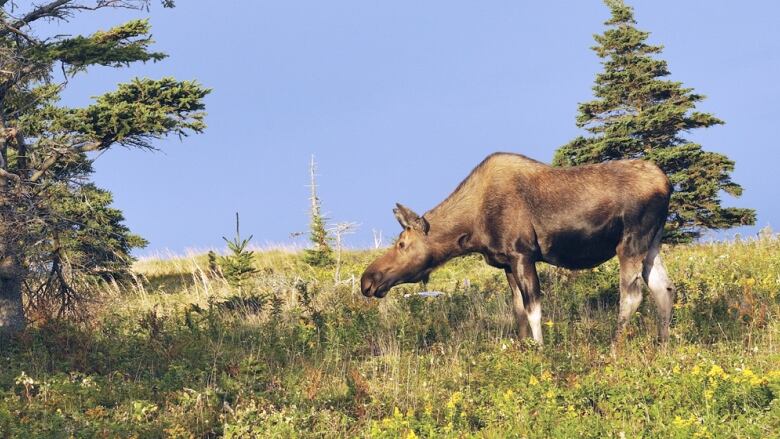Cape Breton moose cull science strong, says Parks Canada
Resource conservation manager Derek Quann says 15 years of study support reducing population

Hunters from the Unama'kiInstitute of Natural Resources have begun setting up a camp on North Mountainin Cape Breton Highlands National Park, as they preparefor an experimentalcull of moose in a 20-square-kilometre area.
Parks Canada has been trying to regeneratevegetation inan area on the mountain that was destroyed by the spruce budworm, but moose eatthe saplings.
The cull is opposed by some people who say the harsh winter of 2015 diminished the population naturally. ButDerek Quann, Parks Canada's resource conservation manager at the park, says that's not what the science indicates.
"Parks Canada, with its partners in the province, and the Mi'kmaq in Nova Scotia, have been monitoring this population quite closely for well over 15 years," he says.
"So, we have an idea of the density of the population, how that's distributed, not just in the parkbut outside as well.
"Within Parks Canada direction, policy, a species of wildlife can be considered hyper-abundant if it meets one of four criteria. The population in this case can be set to have met all of them."
'A loss of native biodiversity'
A species is considered hyper-abundant if itexceeds the upper range of a natural state or variability that's characteristic of the ecosystemor begins to cause harm to other elements of the ecosystem.
Quann said there is concern for other wildlife on North Mountain that rely on vegetation for habitat, including Bicknell's thrush, a species at risk.
"We can meet the criteria pointing to evidence ofserious ecosystemimpacts outside the historical or modelled range of what weexpect out of aboreal forest," he said.
"So, once we started putting our moose numbers together beside ourvegetation information, with the wonders of satellite imagery and aerial photography, we could see a definitetrend thatshows no sign ofreversing and a loss of native bio-diversity."
Quannsaid the hyper-abundance of moose in the park is believed to be because there's no predator.
Therehave been protests against the hunt in recent weeksled by Dennis Day, a hunter and hunting guide who lives near North Mountain.
Day claims he's seen hardly any moose in their usual spots since last winter, and he believes the population was reduced by starvation and injury.
Quann, however, says the moose population has likely been hyper-abundant for"many years."The cull will be held over two seasons, with a total quota of about 40 moose.
Safety measures
As hunting is not usually allowed in the national park, Quann says measures have been taken to protect the public during the cull.
"We have already established a closed area in the park to try to keep the harvesters and the general public a safe distance apart," he said.
"In the park where people would not normally assume that there may be hunting going on, we want to take that extra precaution to put people's minds at ease and to ensure safety."
Quannsaidentry and travel in the area of the cull will be restricted, except for through travel.
"People will be able to move freely along the Cabot Trail without stopping and we expect there will be very little disruptionat all, if any, on public access."












_(720p).jpg)


 OFFICIAL HD MUSIC VIDEO.jpg)
.jpg)



























































































